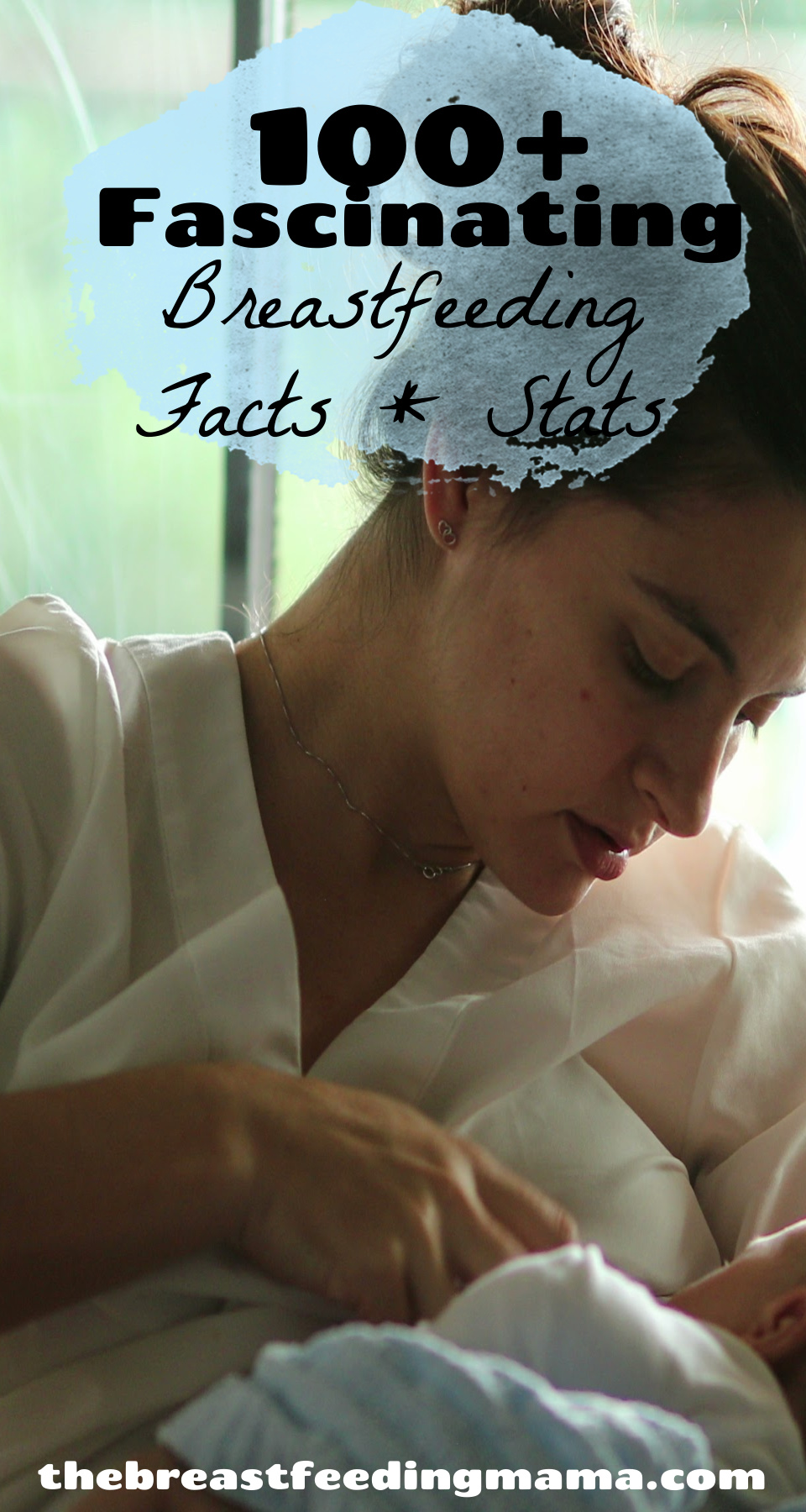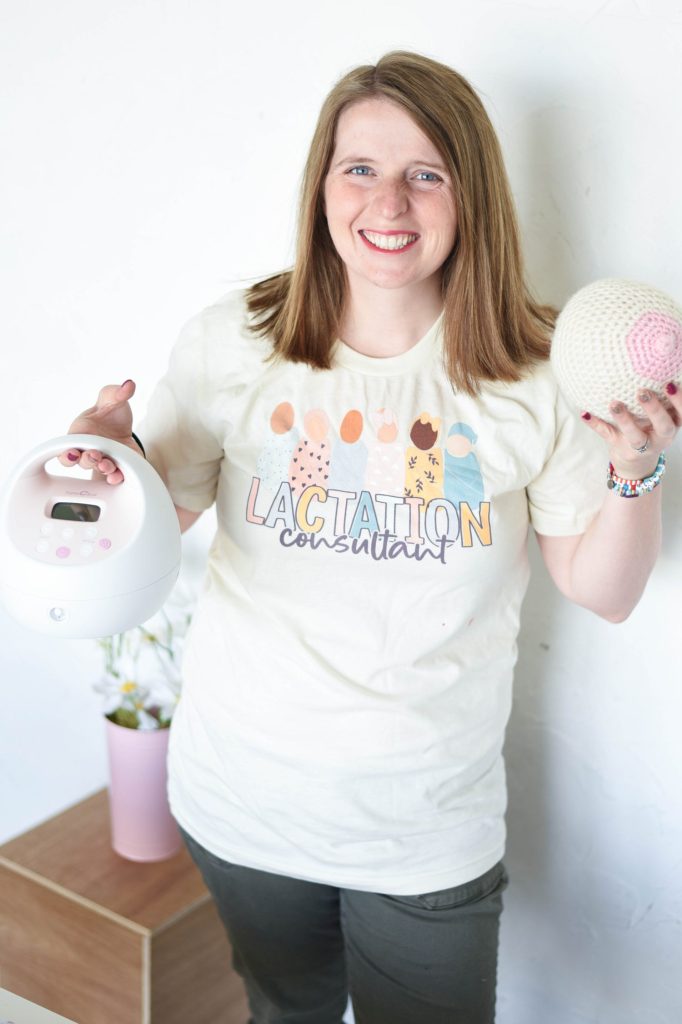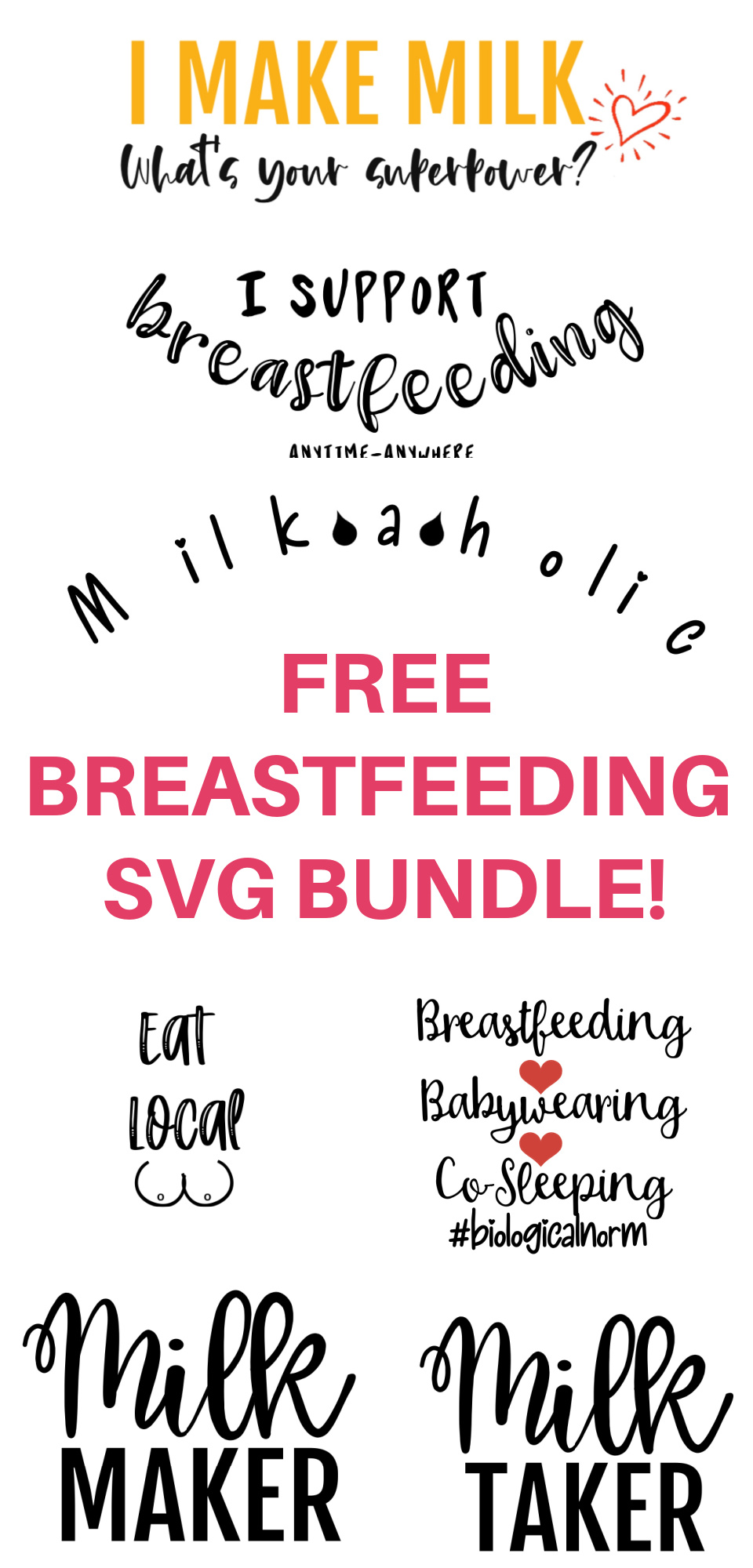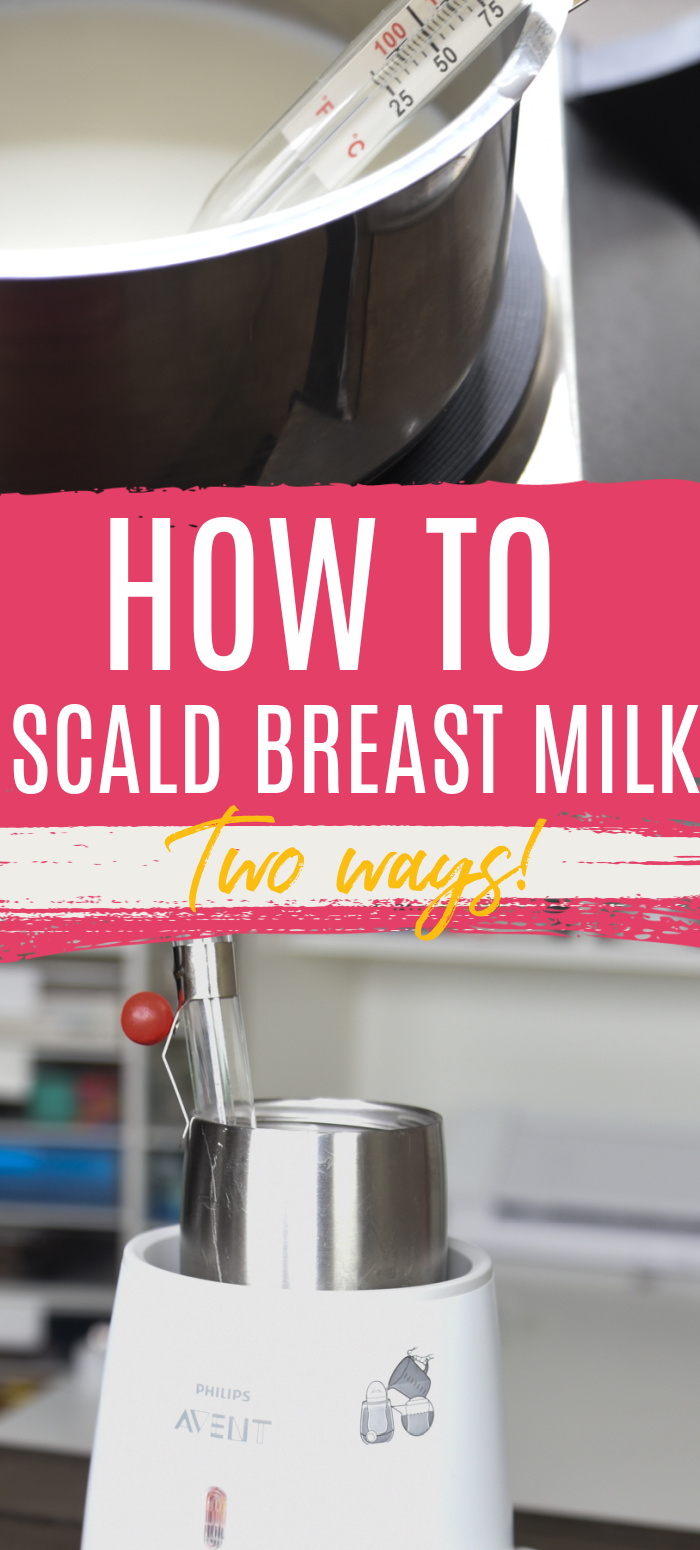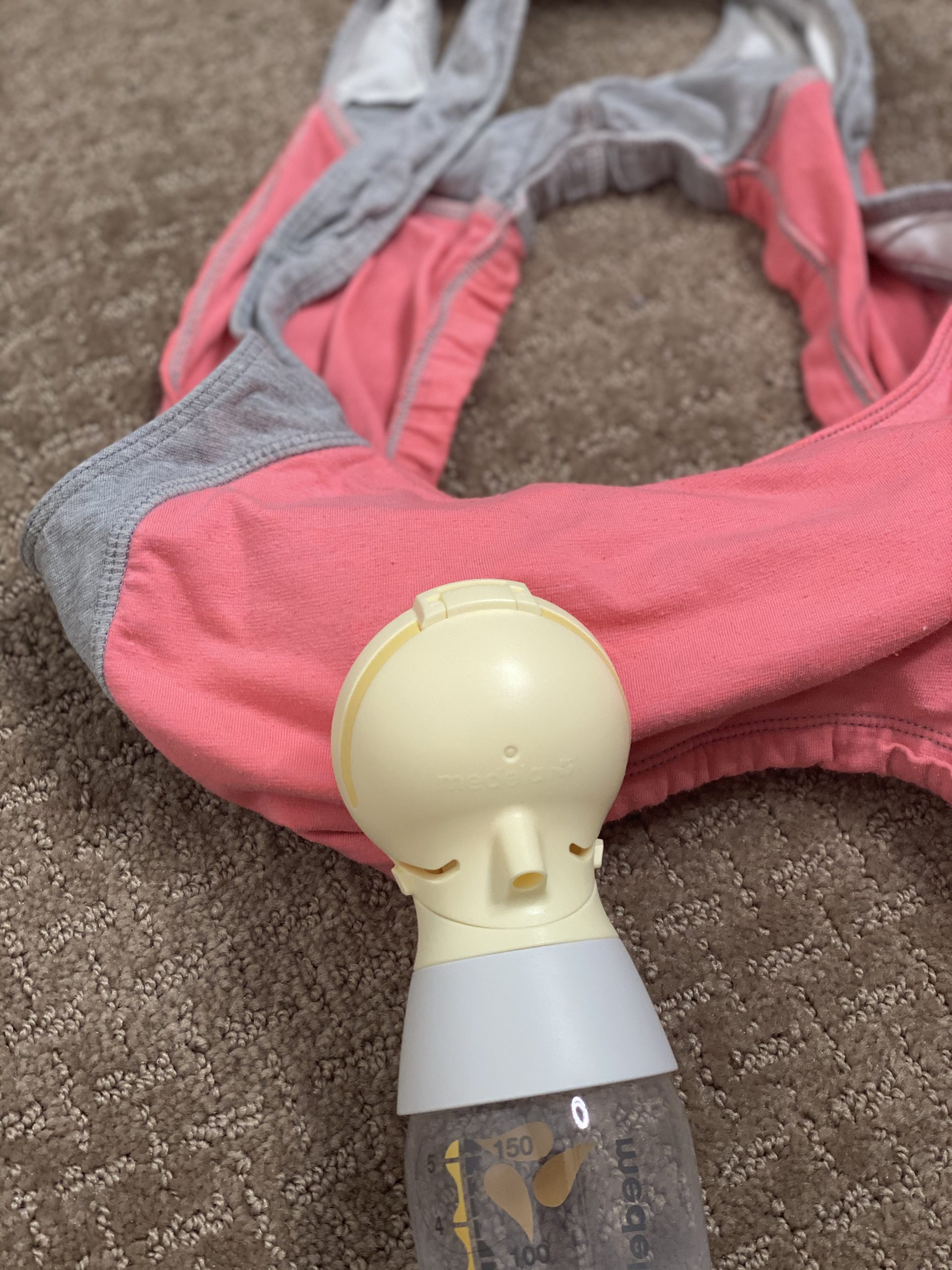There are so many interesting and cool facts about breastfeeding! Some statistics you might know, while some may be completely new to you. Keep reading to learn the top 100+ facts about breastfeeding!
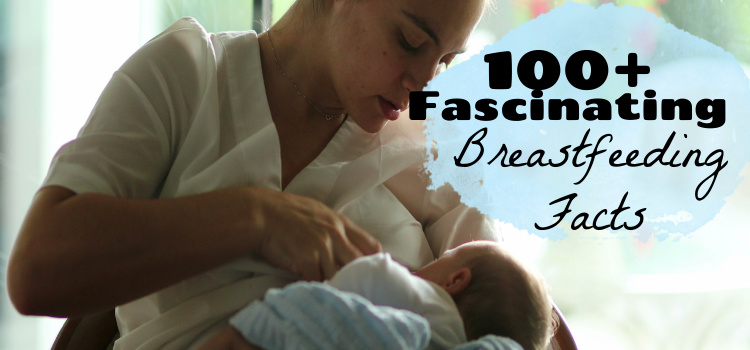
What do you know about breastfeeding?
You might know a couple of facts but did you know there is SO much to learn and know? We’ve compiled a comprehensive list of interesting breastfeeding and breast milk facts and statistics. These are the top facts out there- all in one place.
So settle in, and learn something new!
Breastfeeding Rate Statistics

It’s very interesting to look at breastfeeding rates around the world. Here are a few key statistics:
- Worldwide, 3 in 5 babies are not breastfed in the first hour after birth
- 820,000 children could be saved annually with better breastfeeding rates for months 0-23
- Only 41% of infants under six months are exclusively breastfed worldwide
- The World Health Organization has set a goal to reach 50% by 2025.
- In high income countries, more than 1 in 5 babies have never breastfed
- In low and medium income countries, nearly all babies are breastfed
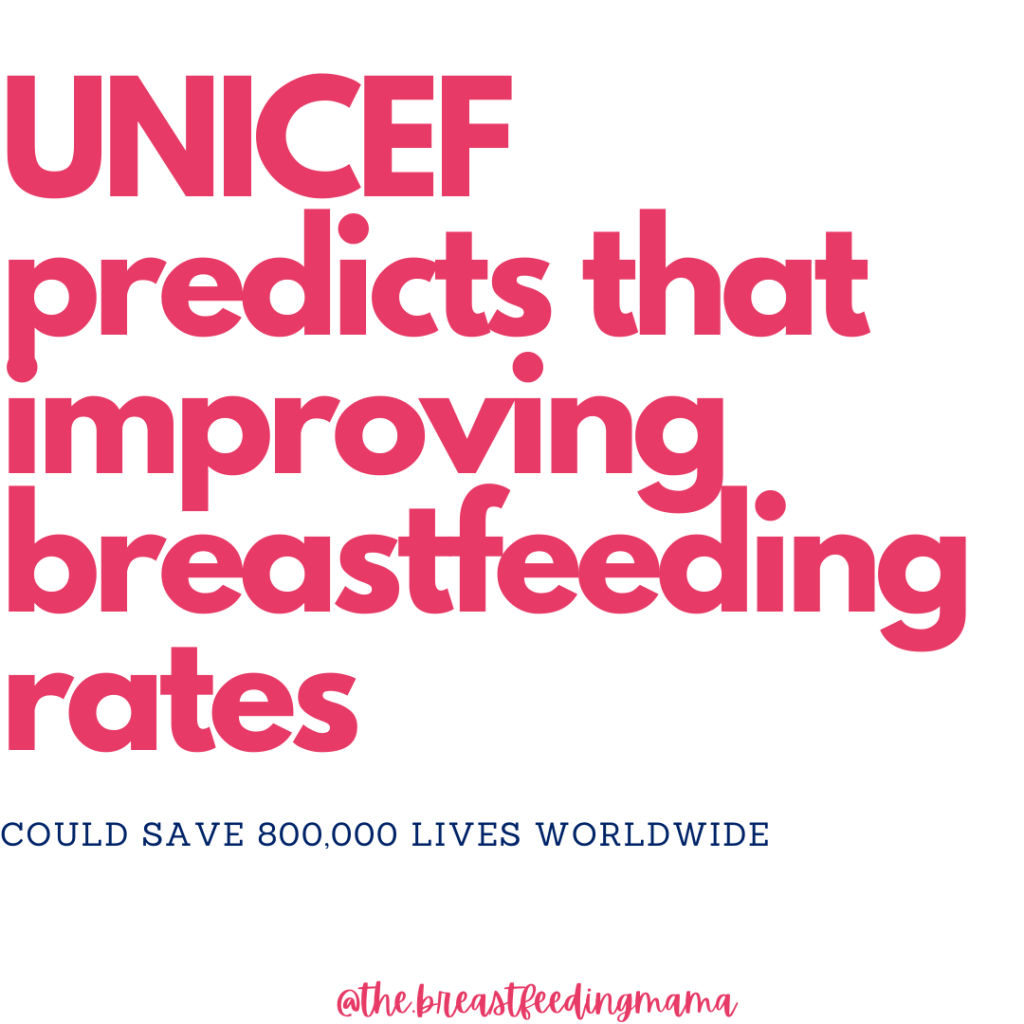
Countries With Highest Breastfeeding Rates

These are in reference to exclusive breastfeeding an infant younger than six months
- Croatia with a a 98% rate
- Rwanda with 86% with
- Chile – 84%
- Burundi with 82%
- Sri Lanka – 82%
Countries With Lowest Breastfeeding Rates
These are in reference to exclusive breastfeeding an infant younger than six months
- Chad – .11%
- Suriname – 2.77%
- St. Lucia – 3.50%
- Domincan Republic – 4.56%
- Gabon – 5.08%
United States Breastfeeding Rates
- Nationwide, 74% of babies in the United States have EVER been breastfed
- 58% of babies are breastfed (any amount) at six months – only 25.6% are exclusively breastfed through six months
- 35.3% are still breastfeeding at the age of one
- Oregon has the highest percentage (93.5%) of babies who are ever breastfed
- Mississippi has the lowest percentage (63.4%) of babies who are ever breastfed
United Kingdom Breastfeeding Rates

I could highlight many different regions in the world, but I am frequently contacted by moms in the United Kingdom about how poor the lactation support is there. I thought it was interesting to look at these rates.
- In the United Kingdom, 81% of women begin breastfeeding.
- By six weeks, the rate drops of exclusive breastfeeding drops to 24% in England, 17% in the Wales, and 13% in Northern Ireland
- By six months, the rate of exclusive breastfeeding is 1%
- The rate of any breastfeeding in the UK at six months is 34%
- The proportion of infants receiving breast milk has remained about the same through the COVID-19 pandemic
Breast Milk Statistics/Facts
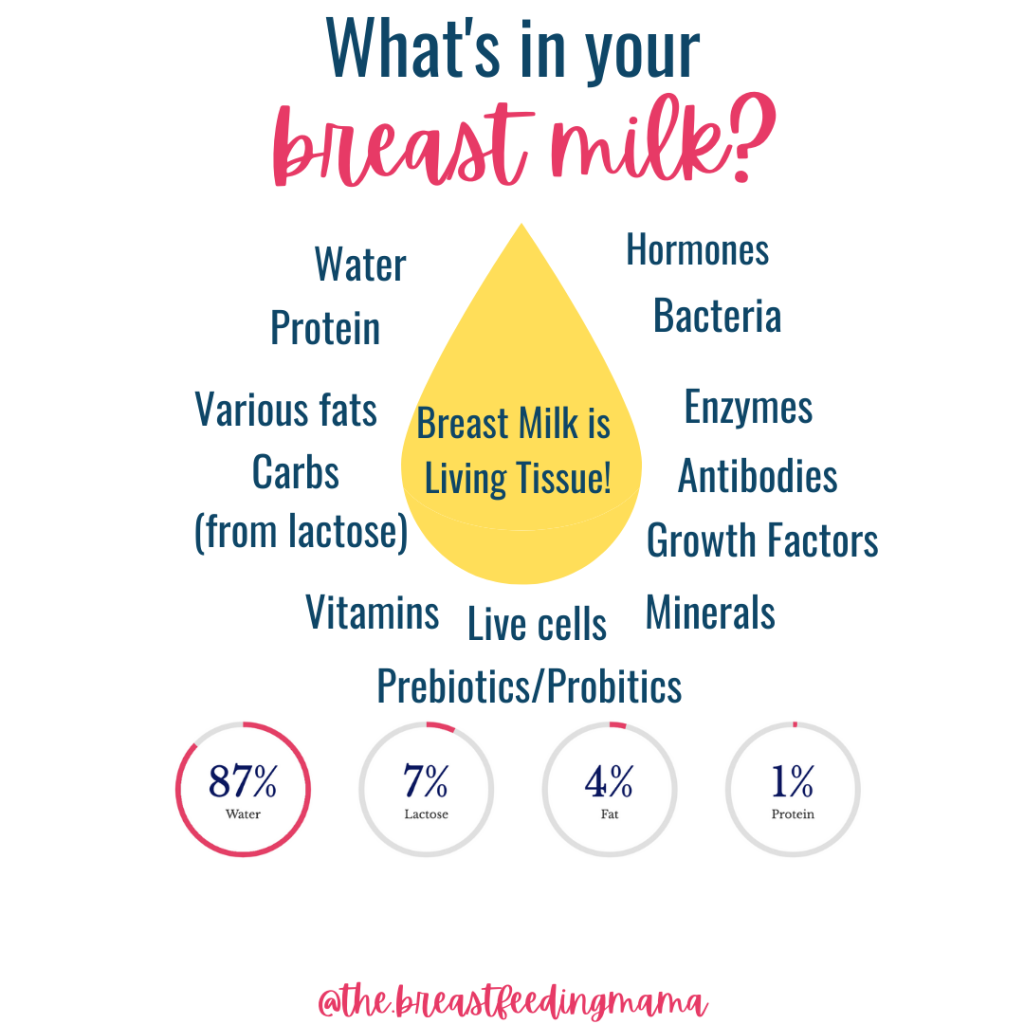
- Breast milk is a living substance that contains live cells, including stem cells
- Breast milk is approximately 87% water, 1% protein, 4% fat, and 7% carbohydrate
- You can use breast milk to replace cow’s milk in recipes once your baby starts to eat solids
- Moms of preemies have breast milk with more protein, fat, and other minerals for bone and brain growth
- Breast milk is not always white.
- The smell and taste of your breastmilk can change depending on the foods you eat.
- Your breastmilk changes as the needs of your baby changes.
- The amount of breastmilk you produce has nothing to do with breast size.
- Preemie babies who are fed breastmilk in their first 28 days of life have better brain development by the time they reach their original due date.
- Colostrum is the first milk that your breasts produce
- Breastmilk has antibodies that help your baby fight against infection
- Breastmilk contains hormones such as melatonin, Leptin, Endorphins, Oxytocin, and Thyroxine
- Higher perception of breast milk is positively linked to exclusive breastfeeding
- Skin-to-skin and breastfeeding self-efficacy are two indicators of exlcusive breastfeeding
- Drops of breastmilk can be used to help treat cuts, soothe diaper rash, or even help infants with eye and ear infections because of their antibodies.
- Oxytocin and prolactin hormones are hormones released during breastfeeding that encouraging mothers to bond with their babies
- 1/3 of women can’t feel when their milk lets down
- When colostrum is expressed during hour one after giving birth, it increased production by 130% by six weeks.
- Breastmilk makes babies sleepy, this is because by the end of the day, breastmilk contains more serotonin—a hormone that helps babies sleep.
- Producing breast milk consumes 25% of the body’s energy; the brain only uses 20% by comparison
- Almost 75% of all moms produce more milk in their right breast, whether they are right- or left- handed
- You don’t have to drink milk, to produce milk
- Producing breast milk consumes 25% of the body’s energy; the brain only uses 20% by comparison.
- There is an average of 15-20 lobes in a successfully lactating breast
- While there has only been a few studies done, it’s estimated between 10 and 15% of women struggle with low milk supply
- 60% of mothers in the USA don’t breastfeed for as long as they had planned
- 70.5% of mothers who did not graduate from high school ever breastfed their babies
- 93,4% of mothers who graduated from college ever breastfeed their babies while 73.9% breastfeed for at least 6 months.
Breastfeeding Problems Facts/Statistics
Early Breastfeeding Problems
The following statistics are from a study conducted by UC Davis.
- 92% of mothers report breastfeeding problems by day three. Of those concerns:
- 52% were concerning baby struggling to breastfeed at the breast
- 44% reported pain
- 40% were concerned about their milk supply
- Infant feeding difficulty and milk quantity are the top reasons for stopping breastfeeding prematurely.
- Between 4-10% of babies are born with tongue-tie, which makes it difficult to latch. They are three times more likely to be bottle fed at one week.
Breastfeeding Pain

- In one study that focused on breastfeeding pain…
- 57% of issues related to pain were resolved in about 18 days
- Nipple pain was the reason for 36% of cases
- The most common reason for nipple pain was incorrect positioning and attachment
- The next most common reasons (in order) were tongue tie, infection, palatal anamoly, flat/inverted nipples, mastitis, and vasospasms
Pumping Statistics/Facts
- 77% of breastfeeding/pumping moms get outside help from lactation consultants
- Many breast pumps are free through insurance
- Breastfeeding in addition to pumping can help increase your milk supply
- Breast pumps from years ago used to resemble turkey basters
- Hand expressing is one way to express milk if your breast feel exceptionally full
- 85% of women use a pump at least some of the time
Breastfeeding Statistics/Facts
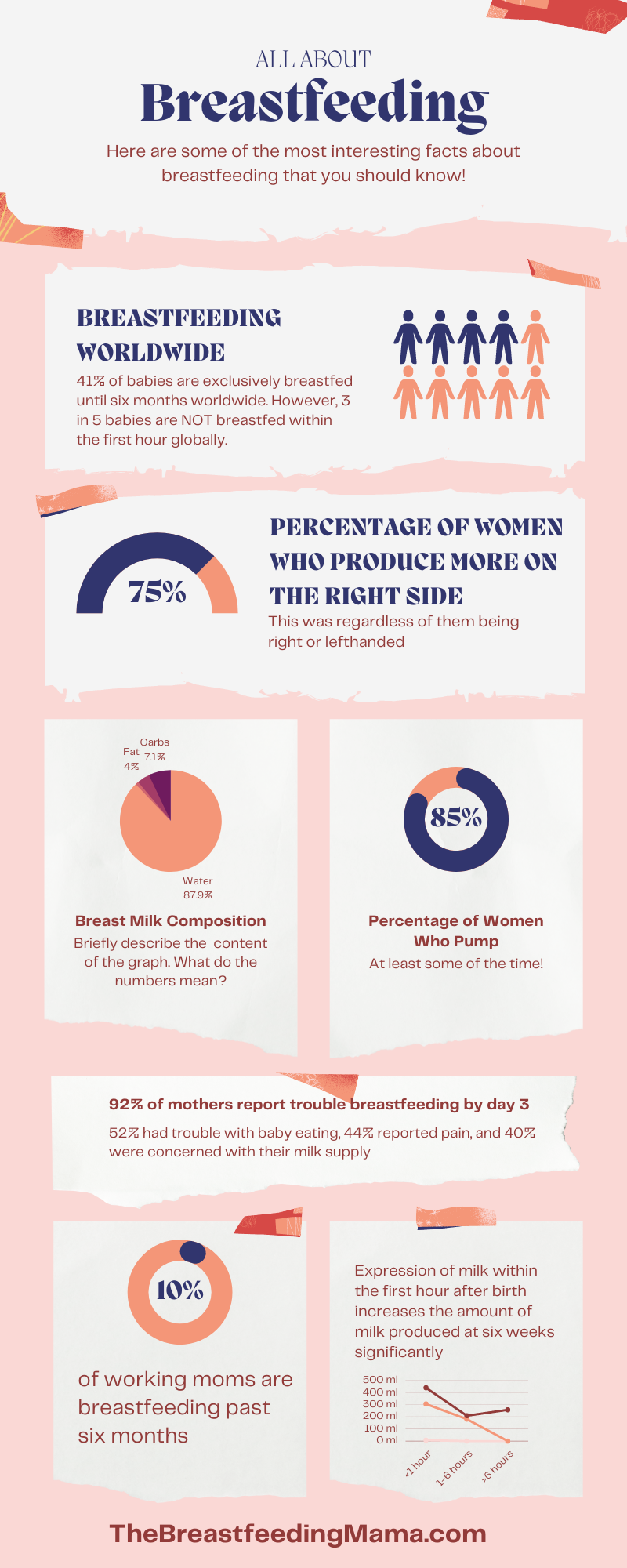
- Breastfeeding burns between 500-600 calories a day
- Breastfeeding lowers your baby’s risk of illnesses, including ear infections, respiratory infections, gastroenteritis, and Necrotizing Enterocolitis
- The amount of breast milk you are able to produce has nothing to do with your breast size but the capacity.
- Mothers who breastfeed have a lower risk of having postpartum depression
- Mothers who breastfeed have a lower risk of developing heart disease, stroke, type-2 diabetes
- The longer a woman breastfeeds in her lifetime, the more protection she receives from certain ailments and diseases.
- 1/3 of women make the decision to breastfeed during pregnancy
- Breastfeeding lowers your child’s risk of common ailments.
- Breastfeeding can help to shrink the uterus back to its pre-pregnancy size.
- Babies in urban areas are more likely to be breastfed than those in rural areas.
- In the U.S. mothers who are over age 30 are more likely to breastfeed (86.3%) than mothers aged 20-29
- A lactating mother can leak milk when she thinks about her baby or if she hears another baby cry.
- Social media has been linked to increased breastfeeding rates
- In the U.S., mothers who are over age 30 are more likely to ever breastfeed (86.3%) than mothers aged 20-29 (80%)
- When breastfeeding women may have decreased cycles of ovulation
- Babies breastfeed until their full, not when the breast is empty
- Breastmilk sprays out of many holes, not just one.
- Breastfeeding parents are less likely to be diagnosed with post partum depression
- Many women tend to eat more nutritious foods and follow healthier lifestyles (limit smoking and alcohol use) while breastfeeding
- Breastfeeding saves a family approximately $2 to 4 thousand dollars annually (compared to cost of formula)
- Breastfed infants are at lower risk for sudden infant death syndrome
- Women with PCOS appear to have lower breastfeeding initation rates
I
T
Cancer and Breastfeeding Facts
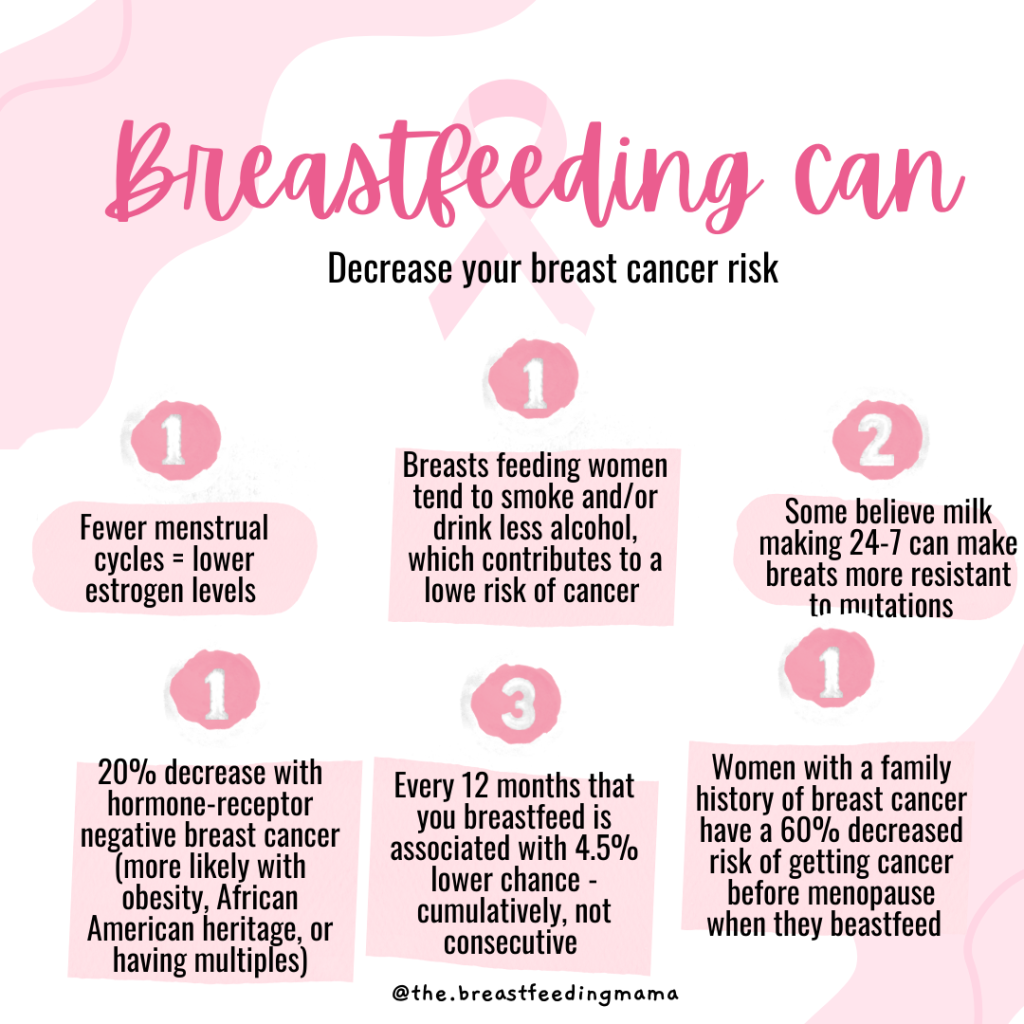
- Mothers who breastfeed have a lower risk of developing breast cancer and ovarian cancer.
- For every year that a mother breastfeeds, her risk of breast cancer is reduced by 6%
- Breastfeeding while undergoing breast cancer treatments is not recommended because therapies used to treat breast cancer can be passed on to the nursing baby through breastmilk.
- It is generally okay to get a mammogram while breastfeeding.
- Women can develop breast cancer at any time – including while breastfeeding or pumping – however, there is no known increase in risk during that time
- Breastfeeding a baby girl actually reduces her lifetime risk of breast cancer by 25%
Breastfeeding and Work Statistics
- 49% of employers in the U.S. currently provide an on-site lactation/mother’s room.
- 78.9% of mothers breastfeeding when they returned to work attempting to pump
- The median time for expressing milk at work is 6.3 months, with an average infant age of about 9 months when mom stopped pumping
- 10% of mothers working full-time still breastfed their babies at six months.
- Significant predictors of continued breastfeding past six months for working moms were higher education level, lower work load, a dedicated lactation room, breast pumping breaks, and encouragement from co-workers and supervisors.
- Black women are more likely to return to work earlier
- In one study that focused on partner support with breastfeeding when a mom returned to work, it found:
- 60.2% of partners initally supported breastfeeding
- 86.7% were willing to share household responsibilities
- 55.4% of employed moms had partners that encouraged them to use a lactation room at work
- 81.9% of partners encouraged them to take pumping breaks
- 85.2% of mothers felt that partner support would increase breastfeeding
Helpful resource for breastfeeding and working moms: The Ultimate Guide to Breastfeeding as a Working Mom: Tips, Schedules and More
h
Sources Cited
- Exclusive breastfeeding (% of children under 6 months) – Country Ranking
- Human Milk Composition: Nutrients and Bioactive Factors
- Impact of a Breastfeeding-Friendly Workplace on an Employed Mother’s Intention to Continue Breastfeeding After Returning to Work
- Association of Timing of Initiation of Breastmilk Expression on Milk Volume and Timing of Lactogenesis Stage II Among Mothers of Very Low-Birth-Weight Infants
- 14 Fascinating Facts About Breastfeeding
- Hidden Communities of Practice in Social Media Groups: Mixed Methods Study
- Breastfeeding – WHO
- How to Deal with Low Breastmilk Supply
- The countries where 1 in 5 children are never breastfed
- CDC Breastfeeding Report Card – 2018
- Health Foundations 15 Facts About Breastfeeding
- Breastfeeding in polycystic ovary syndrome
- Newborn tongue-tie: prevalence and effect on breast-feeding
- Maternal perceptions of partner support during breastfeeding
- Working mothers are still trying to make the breast of it
- Duration of breast milk expression among working mothers enrolled in an employer-sponsored lactation program
- Find out about breastfeeding rates in the UK and our work to improve them.
- The relationship between perceived milk supply and exclusive breastfeeding during the first six months postpartum: a cross-sectional study
- Nipple Pain in Breastfeeding Mothers: Incidence, Causes and Treatments
- Influence of Partner Support on an Employed Mother’s Intention to Breastfeed After Returning to Work
More Posts You Might Enjoy:
- 11 Low Milk Supply False Alarms
- Free Breastfeeding and Alcohol Calculator – Are you Safe to Nurse?
- High Lipase Breast Milk: Why Your Breast Milk Tastes Gross (and What You Can Do)
- 20+ Breastfeeding Tips for Producing More Breast Milk
